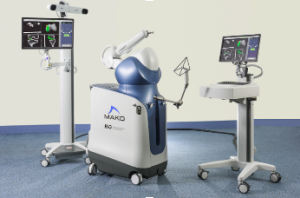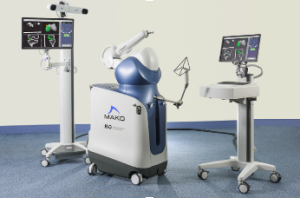Computers help people in their day-to-day life by providing a more accurate, faster, easier and efficient way of doing things. Computers in medical science has been used for a long time, like MRI and CT scans. Recently, computer-aided or robotic surgeries have been gaining popularity in Orthopedics, like hip and knee replacement surgeries.
The question arises, why a computer or robot is needed in the operating room. The answer is to improve the accuracy of the operation. It’s like using a GPS (navigation) while driving a car. The usual question I get from patients is whether the robot is going to perform the operation. The surgeon performs the operation, and the robot and computer give feedback and guidance. The purpose of a robot or computer in the operating room is to guide the surgeon for positioning of the implant (prosthesis) in the correct and anatomic position for that patient. Putting the implants in the correct and anatomic position improves the survivorship of the operation and reduces the risks of complications like dislocation, leg length discrepancies, instability or loosening-related complications.
A CT scan of patient’s knee or hip joint is obtained preoperatively. This CT scan is uploaded in the computer and it provides preliminary info of the patient’s anatomy to the robot or computer. During the operation, trackers are placed on the operative knee or hip and the computer or robot identifies those trackers and correlates it with CT scan and prepares the plan that is accurate for that patient’s anatomy, though the surgeon has ability to provide feedback and make changes in the plan if needed.
Once the surgeon is performing the operation, the robotic arm or computer trackers provides the actual numbers on the screen (of inclination and anteversion angles for hip replacement surgeries and ligament balance for knee replacement surgeries). In this way, the surgeon is able to put the prosthesis in correct position by adjusting it and watching the correct number for that patient’s anatomy.
Robotic or computer aided surgery can be done for partial knee replacement or total hip or knee replacement surgeries.
Scientific preliminary data are very promising for robotics and computer aided surgeries.
Figure shows one kind of robotic arm with camera and computer used in orthopedic surgeries:





